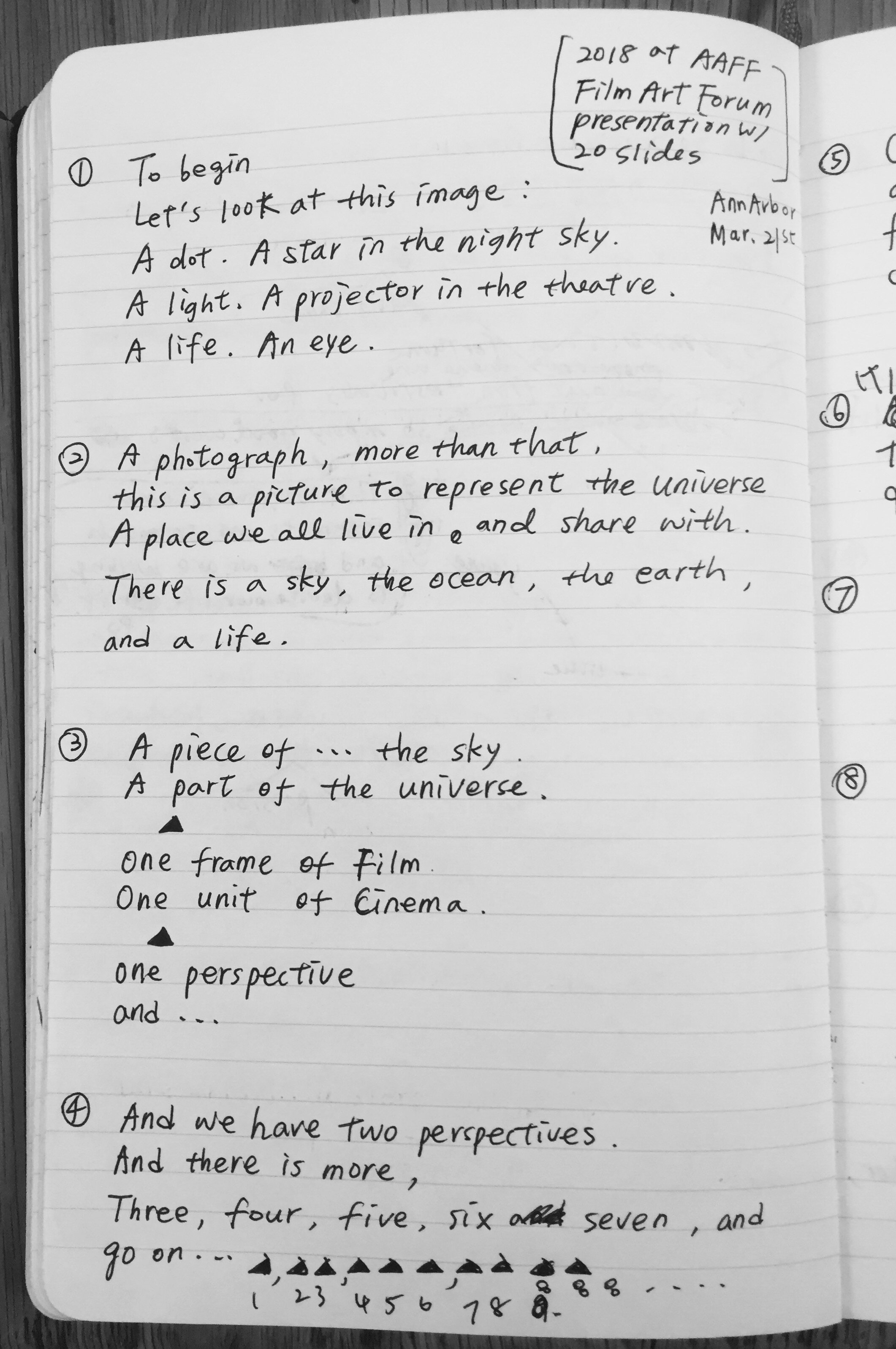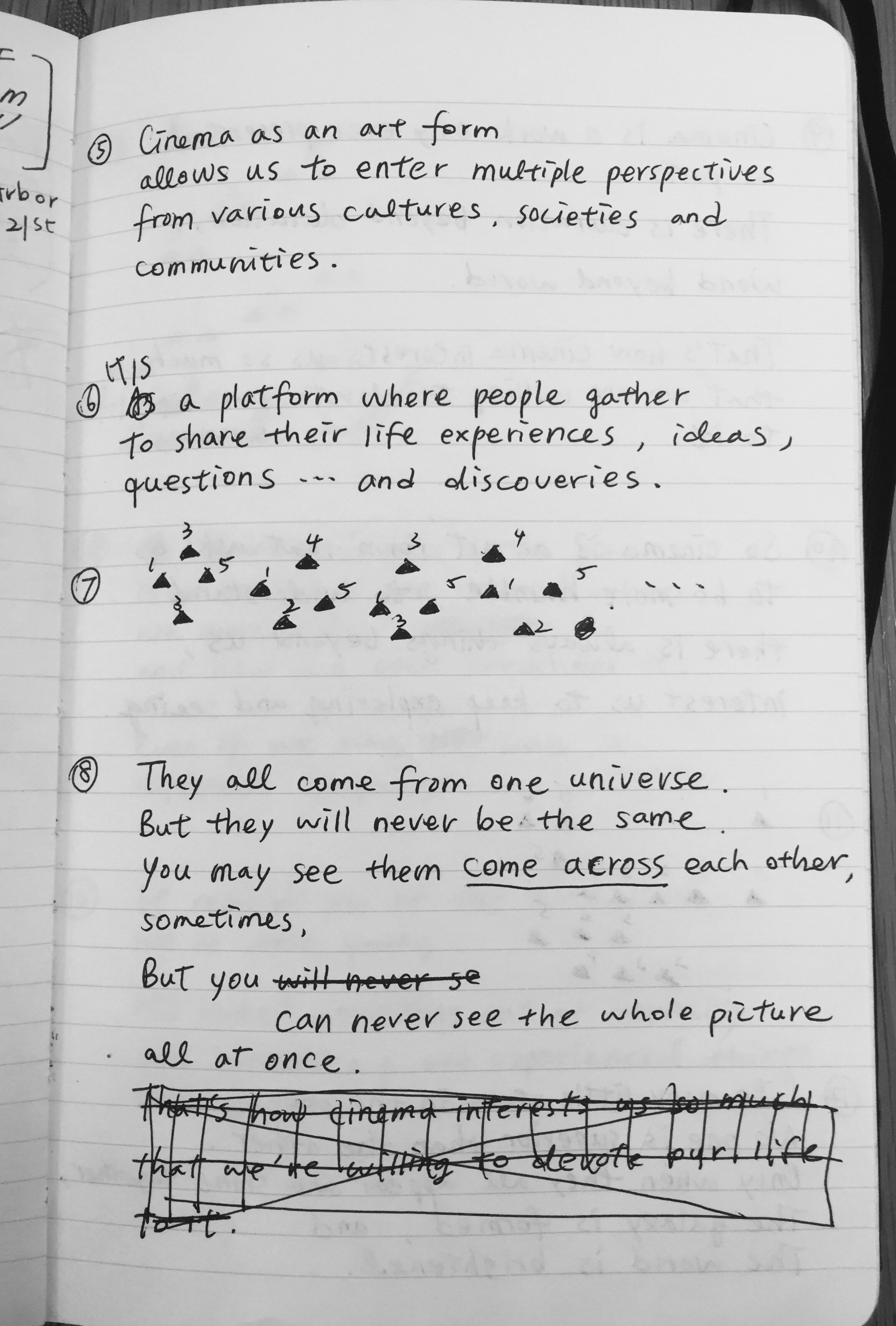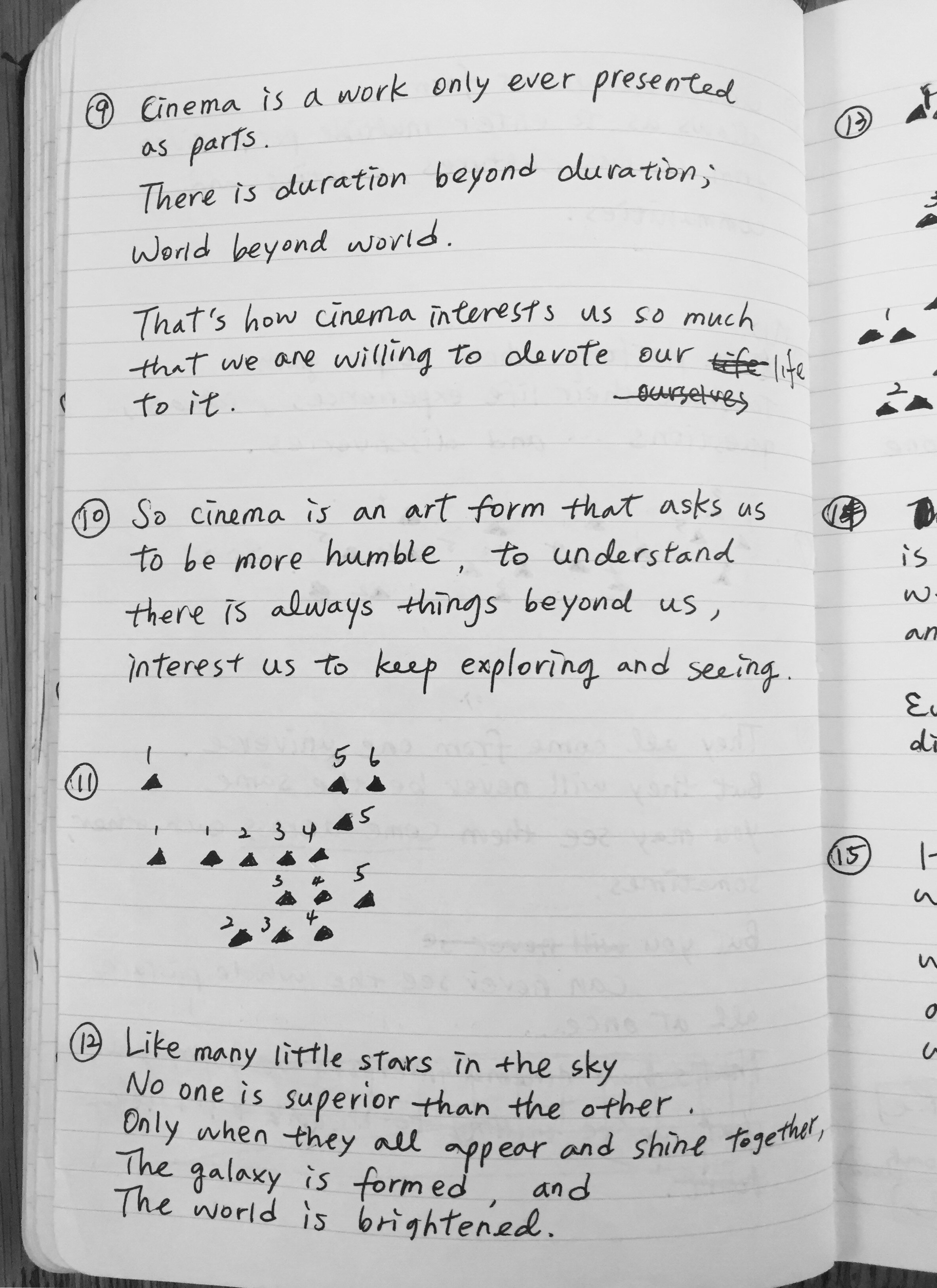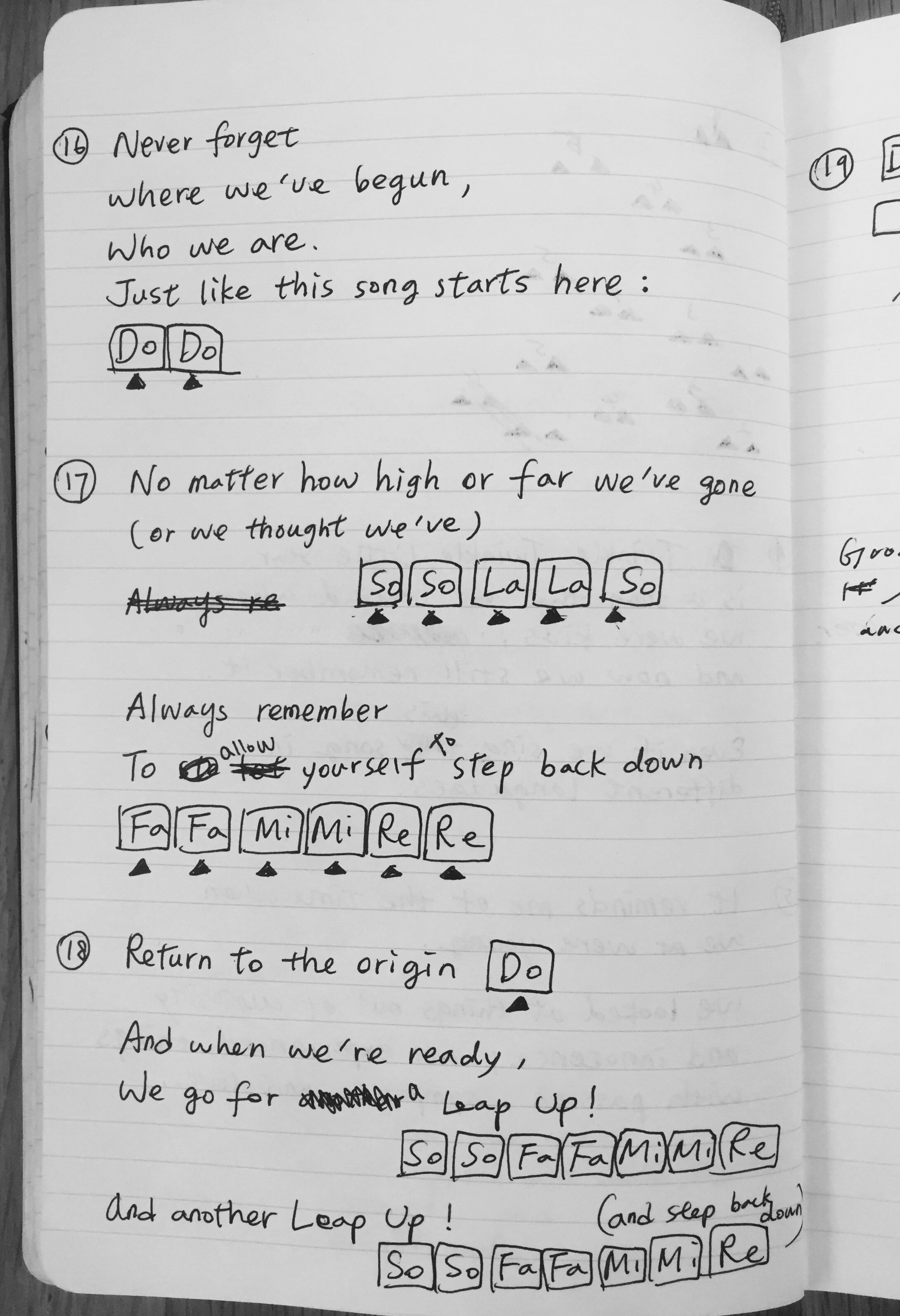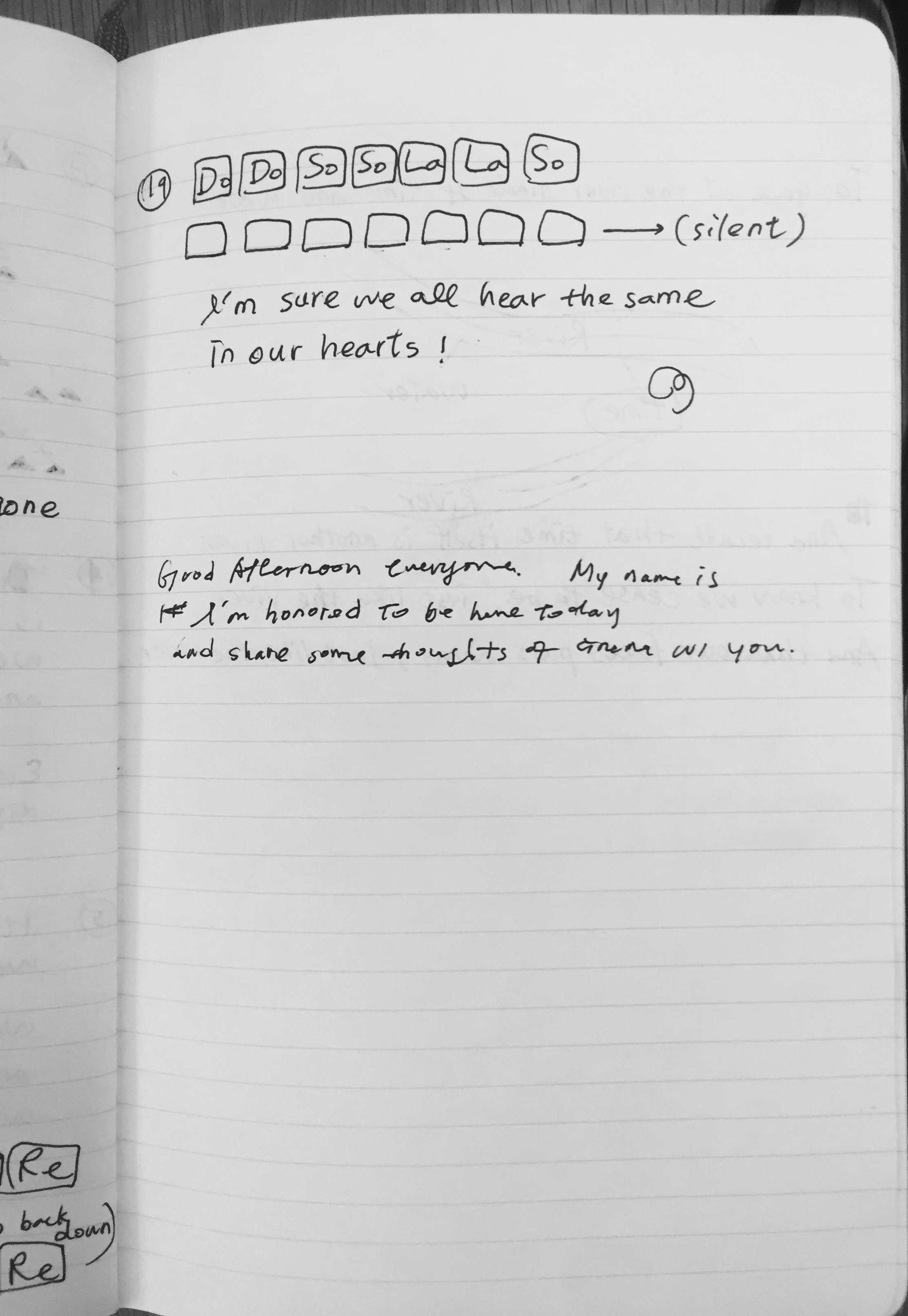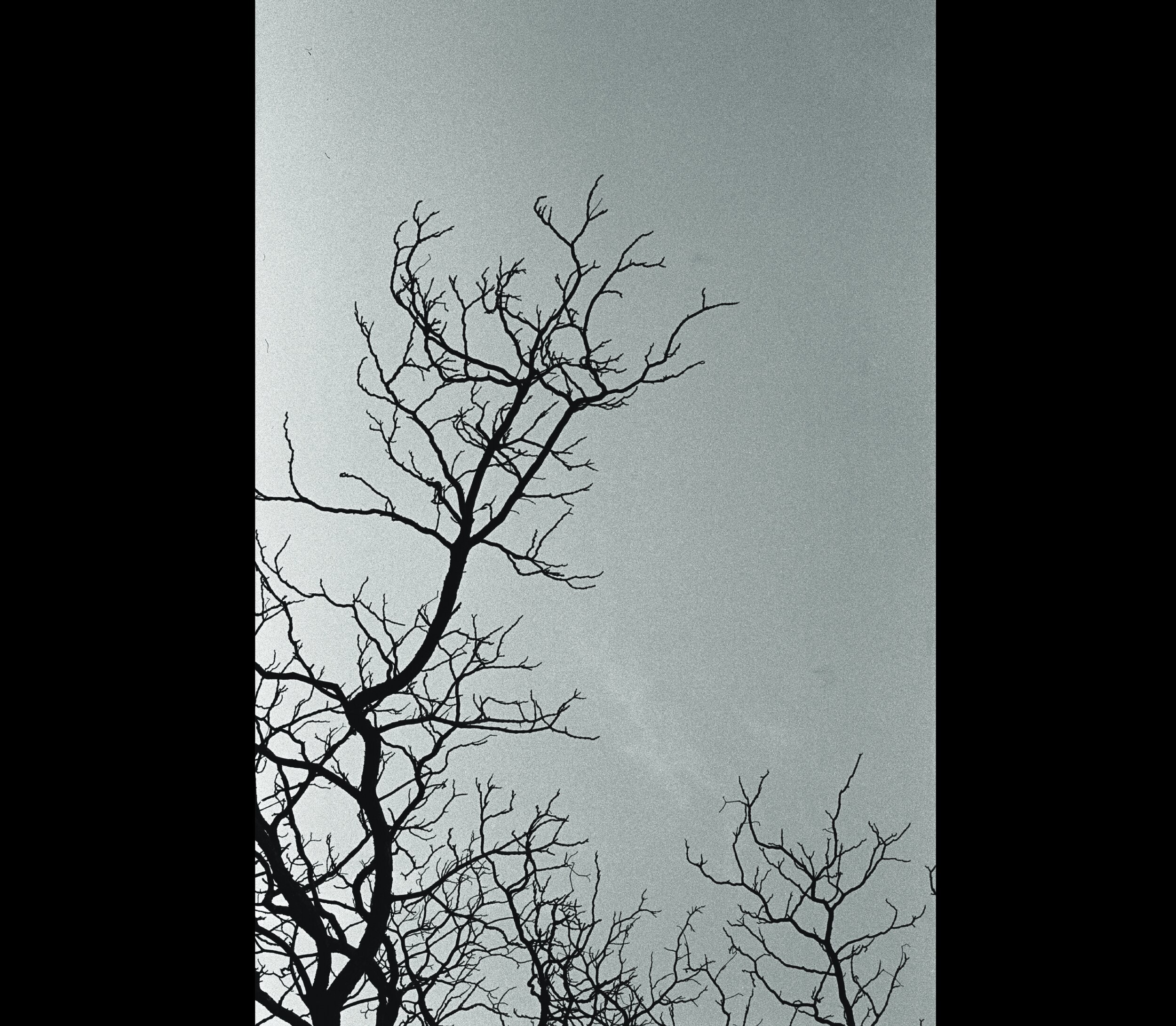The lizard that changes color (I)
for Xiao and Melodica
6’00 / duo performance / 2020 / USA
The lizard that changes color (I) brings an eastern instrument, the xiao (簫), together with a western instrument, the melodica. We started with a concept of an environment that causes the chameleon to change in response to it, as a way of understanding this relationship. Our score represents the alternation of tone and breath of the xiao and the way in which the melodica delicately tracks that breath, against the wooden background. The xiao is usually made of bamboo, the melodica is a modern cross between the harmonica and the pump organ.
Burnt Rose (#1-9)
30:00 / live performance + painting / 2020 / USA
collaboration with Michael Pisaro-Liu
Place: Washington Street Art, Somerville, MA
Media: digital projection/digital sound/ 16mm film/guitar/sine tones/molcajete/
Painting #1-9 (water ink on paper, rose pigment, framed)/soft brick #1-9 (rose pigment, carving on paper, tile, framed)
burnt rose 2020 copyright cherlyn hsing-hsin & michael pisaro-liu
A work engaged with the vibrant materiality of flower pigment, hand-made paper, grinding materials, and light and sound vibration. The nine stages of the work arose from the organic behavior of roses under a set of heating and drying conditions. The media was mostly hand-processed.
Artists Statement:
What color is a rose? There are many colors, even in a single rose. We learn for example that the red colors come from anthocyanins and the yellow from carotenoids. We wanted to know what kinds of colors would emerge from a rose, a particular bouquet of roses, when they were heated, baked. The resulting pigments, ground into watercolors and painted onto paper in nine stages, form the backbone of a piece which projects these images over long durations, with corresponding music. Celluloid too can burn.
de près ou de loin
30:00 / audio-visual performance / 2020 / USA
The world that used to be near us suddenly becomes almost unreachable and surreal. de près ou de loin 咫尺天涯 looks at and listens to a small slice of our world, with the hunch that something else is there. This work was made under the force of social distancing due to the COVID-19 pandemic. The condition of inaccessibility abetted a posture of looking out the window for a long period of time. It also allowed us to sense the incalculable distance between individual reality and the virtual world.
Artist Statement:
In times when a world visibly changes, we become especially conscious of previously unseen aspects of that world, and perhaps of the infinite number of worlds that exist and that could exist. They might be far away (at the conceptual borders of the universe) or extremely close (even in the interstices of our own bodies). They can be visible or invisible. That which is nearby, but which also feels foreign is especially unsettling.
Cityscape in Notations
audio-visual performance / 2018 / USA
ABSTRACT
A cityscape is presented in an audio-visual performance where the audience members see and hear the city simultaneously. This multimedia experience becomes a dialogue between the visual composer, music improvisers, and the audience.
This project asks the audience members to remove themselves from the familiar environment of scenery, time, and space, to dive into an ocean of symbols, signs, atmospheres, products, and wastes of the city, and to pay attention to what these elements suggest about our contemporary life.
The recorded footage of the city does not only represent the past or collective memories; rather, these elements also are extracted and rearranged into compositions. These reconstructed elements then translate various cultural and environmental contexts into a re-energized and aesthetic form of looking and listening.
2018 copyright cherlyn hsing-hsin liu
COMPOSITION & CONCEPT
At the front of the stage, there are three motion graphic scores -- A, B, and C -- projected onto three separate standing screens, together with three improvising musicians who will interpret and play the scores with optional instruments (traditional or non-traditional).
The three A, B, and C scores are city images composed as music notations, whose elements will consist of, but are not limited to, symbols, signs, architectural fragments, nature scenes, and historical landmarks in contemporary contexts.
The A, B, and C notations that are shown on film will take on the challenge of employing experimental techniques in the darkroom using hand processing and optical printing to produce desired visual languages, such as negative and/or positive images, abstraction, rhythms, multiple colors and densities, and more.
Above the center of the stage, a large 3D projection (either projected on a screen or onto a physical object – for example, a prism) combines images of the A, B, and C scores in juxtaposition, plus original documented city footage below.
The audience will be provided 3D glasses for the show. Note that the three motion graphic scores projected at the front are in 2D, which means that individual audience members will create their own visual rhythm and visual composition by switching between 2D and 3D as part of their respective experiences. Meanwhile, the audience will listen to the music from what has just been seen by the improvisers.
The 3D projection is not intended to recreate the cityscape as mainly realistic, but rather to enable the audience to reconstruct and rethink our surroundings today. By means of reconstruction, the audience is asked to walk away from their familiar everyday time and space, and collaborate with the visual composer and musicians to learn a particular city/space through a set of new audio-visual vocabulary.
Cinema As An Art Form
Artist talk at Ann Arbor Film Festival
presentation + xylophone performance / USA / 2018
Sculpture(s) Silence(s)
Installation and Performance / 2017 12.12 / USA
Place: CalArts Langley Hall, Valencia, California
Media: 16mm film + three projectors and speakers + field sound mix device
THEME:
A sculpture presents silences no-sound and no-image, parallels with questions of our understandings and anticipations of silence and nothingness.
INSTRUCTION:
a. Project can take place in any formal or casual space, only it requires electricity for projectors.
b. The lighting condition should not be restricted, nor should require traditional cinema screens to project on; Any objects or surfaces already existing in the space can be used for projections. However, it should at least allow the projections more or less to be seen, to show the substances of something in the form of nothingness in the state of flux and unpredictability.
c. The film projectors are not replaceable with digital projectors. Film projectors let the sculpture appear alive spontaneously by moving, accumulating dust and scratches as film/time passes in the particular space. It’s important that the sculpture is living, growing the time at site.
d. The sound instrument can vary. Only it is able to sound or no sound on its own with different conditions without continuous controls. Set the instrument in the center of, or nearby the projectors, and leave it to flow between sound and/or no sound.
ON-SITE (2017):
a. One piece of clear celluloid runs through three projectors with three speakers set up as well as reading the clear optical sound.
b. In the center of the three projectors, a theremin is set to a level of sensibility at which it may sound on its own as it receives vibration in the environment, for instance, as the film strip or visitors passing around it; Or it may not sound at all if it does not receive enough or any stimulus.
c. A score of the sculpture on-site, read:
Does silence exist without the anticipation of sound? Does emptiness exist without the anticipation of things?
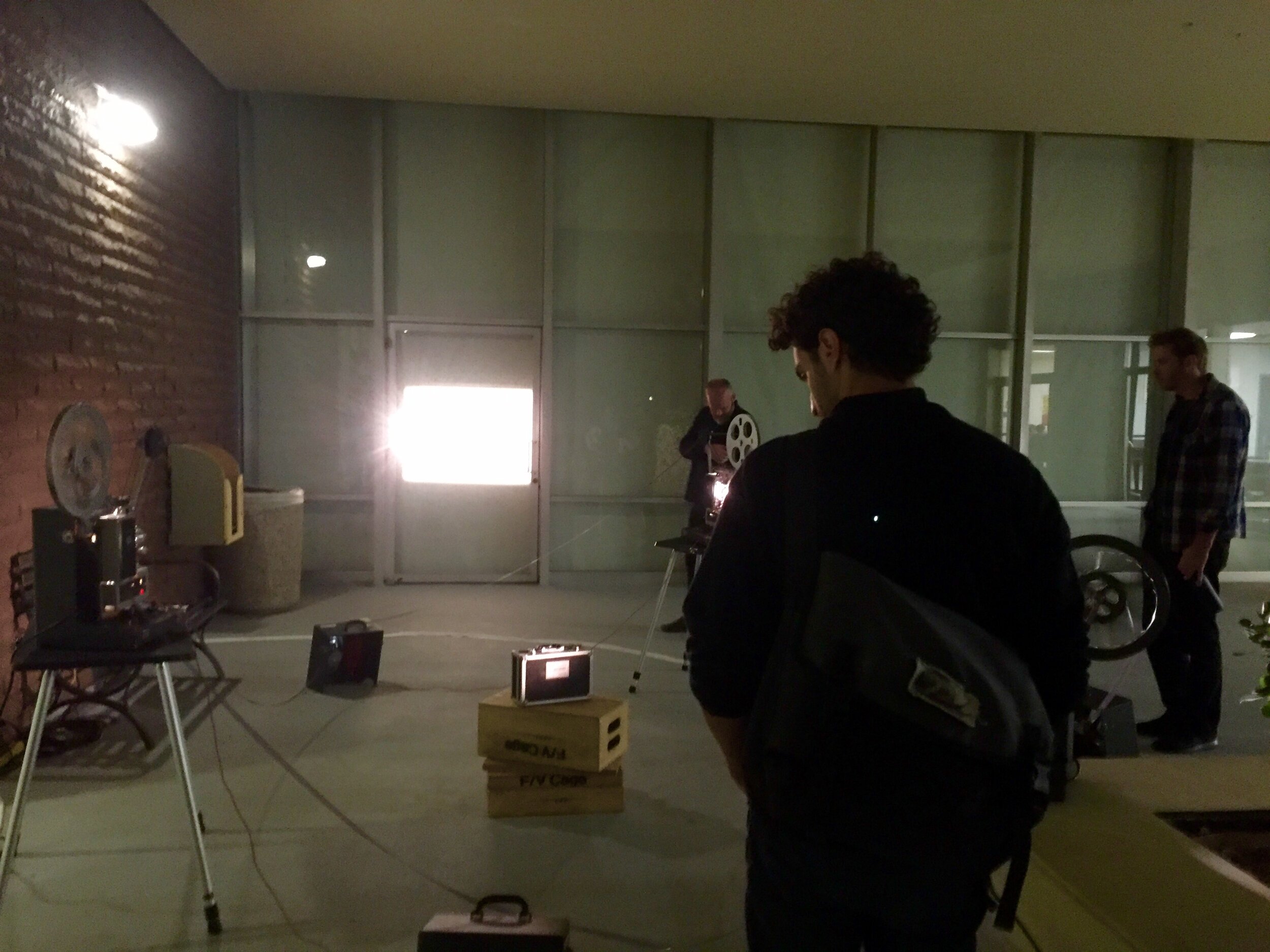
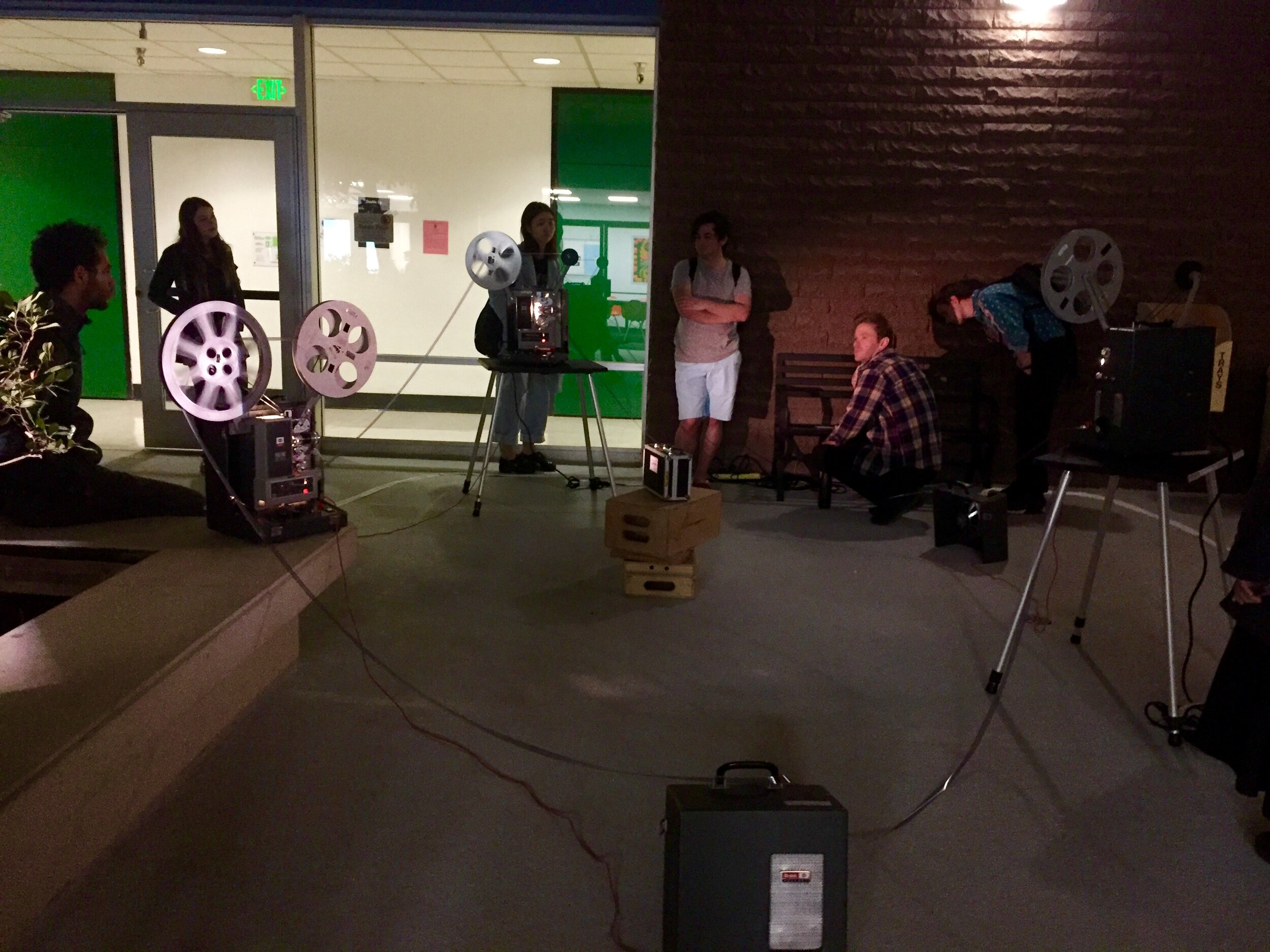
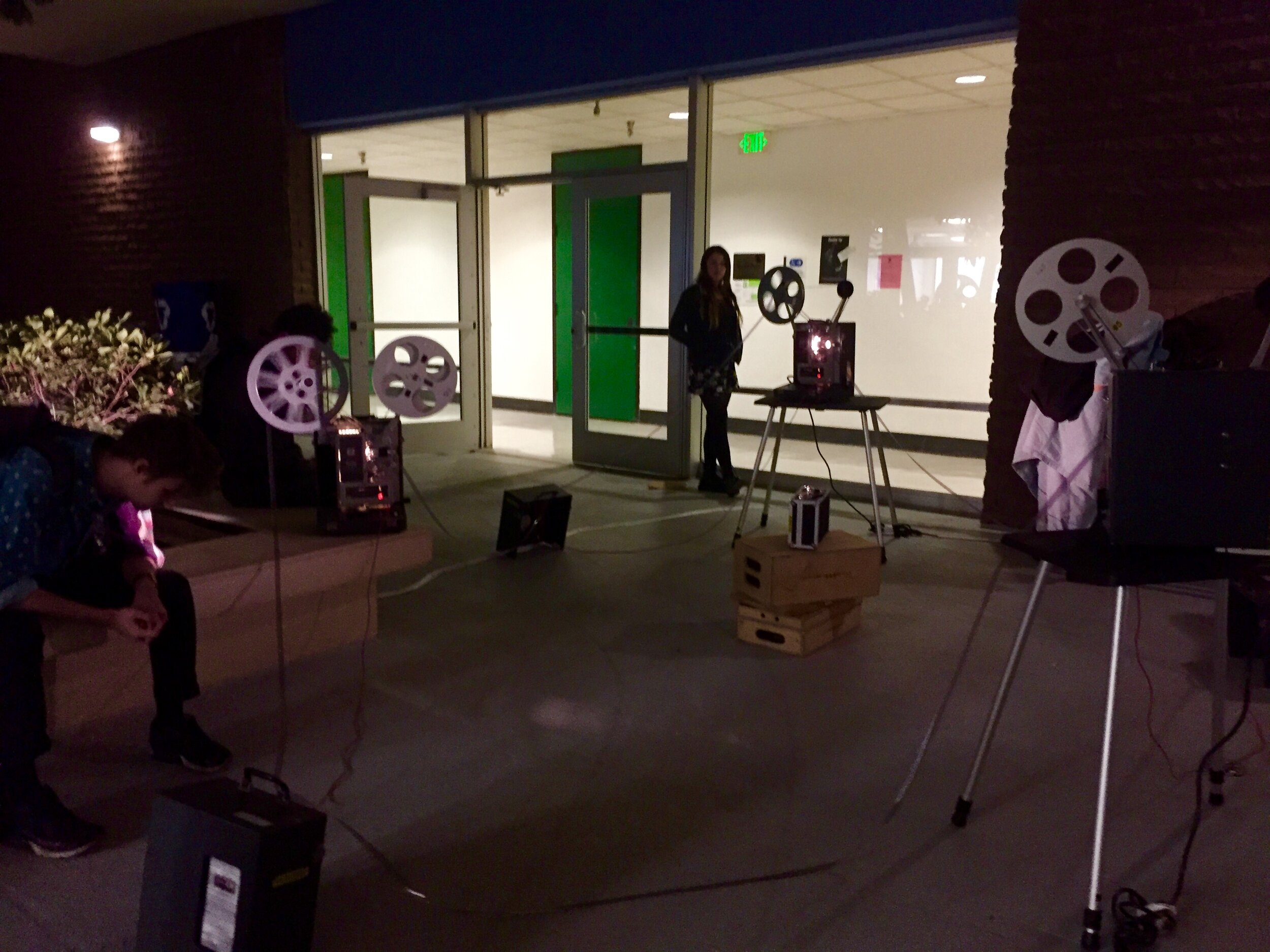
Gender Blind
Photography/ Poetry/ Single-channel projection/ 2013/ Taiwan
Place: To Dear Alternative Art Gallery, Taipei City
Media: hard-carved poetry (block-print on fabric; water-ink; hanging); video (single projection); photography (24 prints, mounted)
THEME
24 photographs of two androgynous male and female models encounter society’s gender prejudices. The attempt of this project is to ask the viewer to look at the human body in its pure form, and not be concerned about defining genders by appearances or cultural stereotypes.
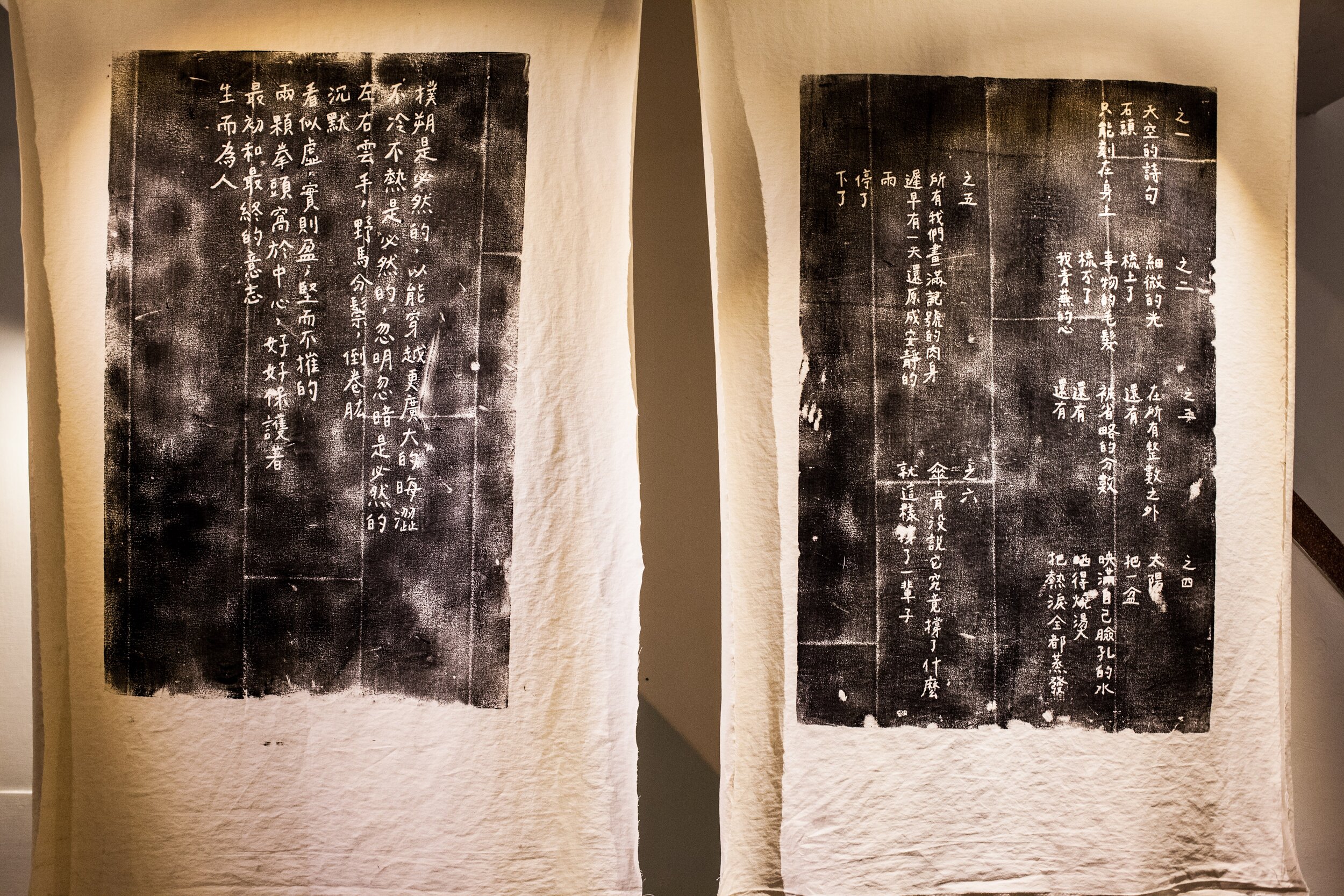
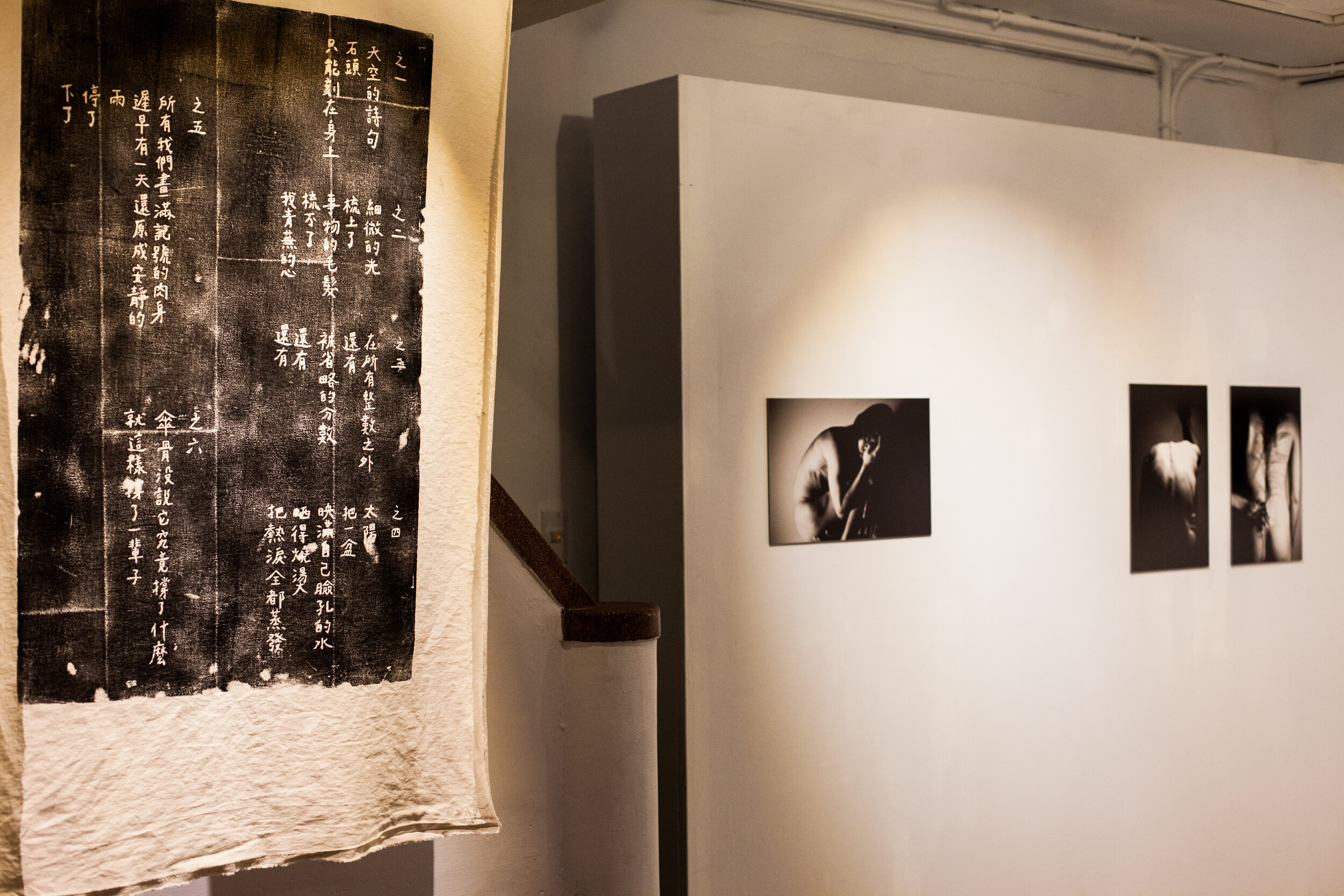




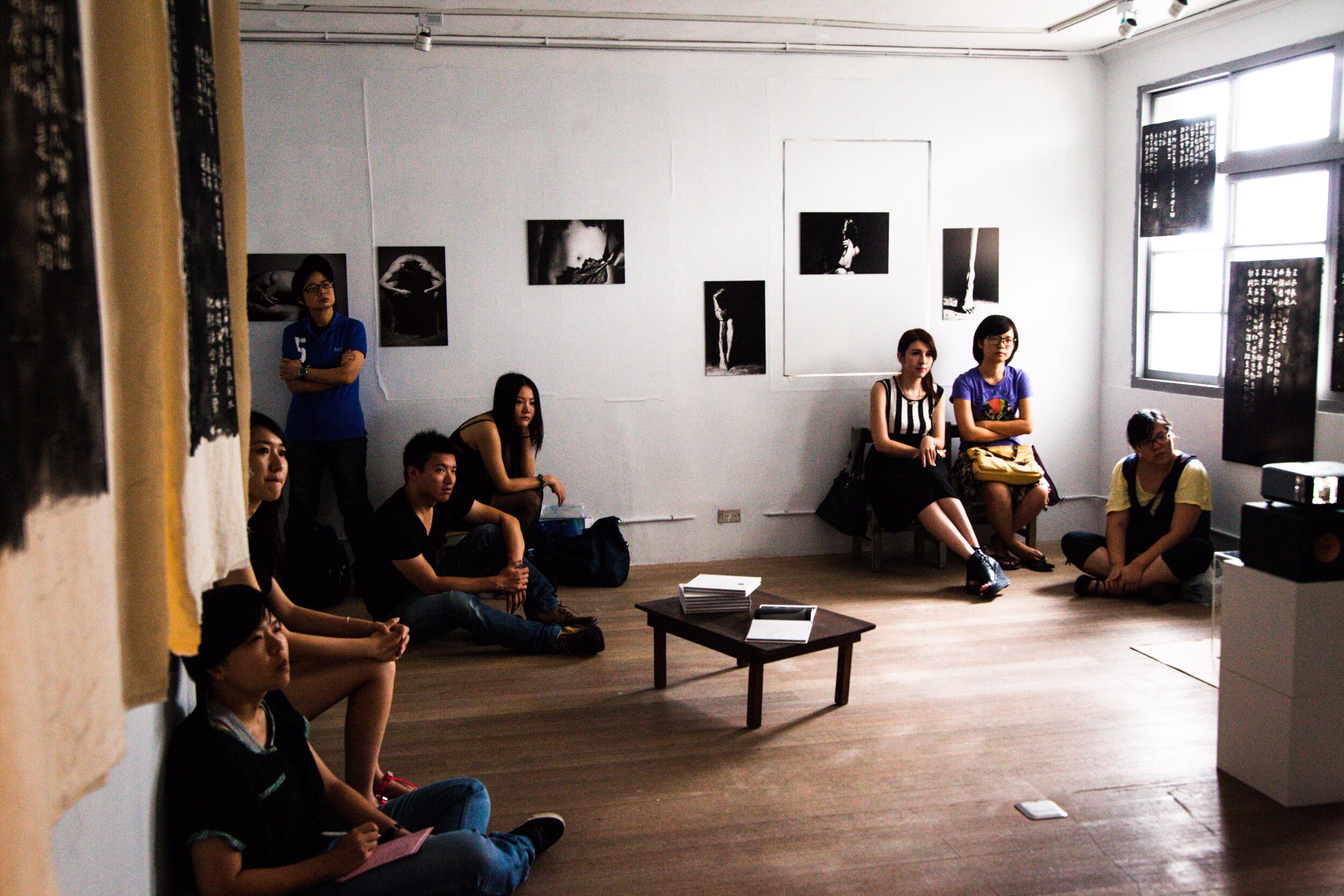
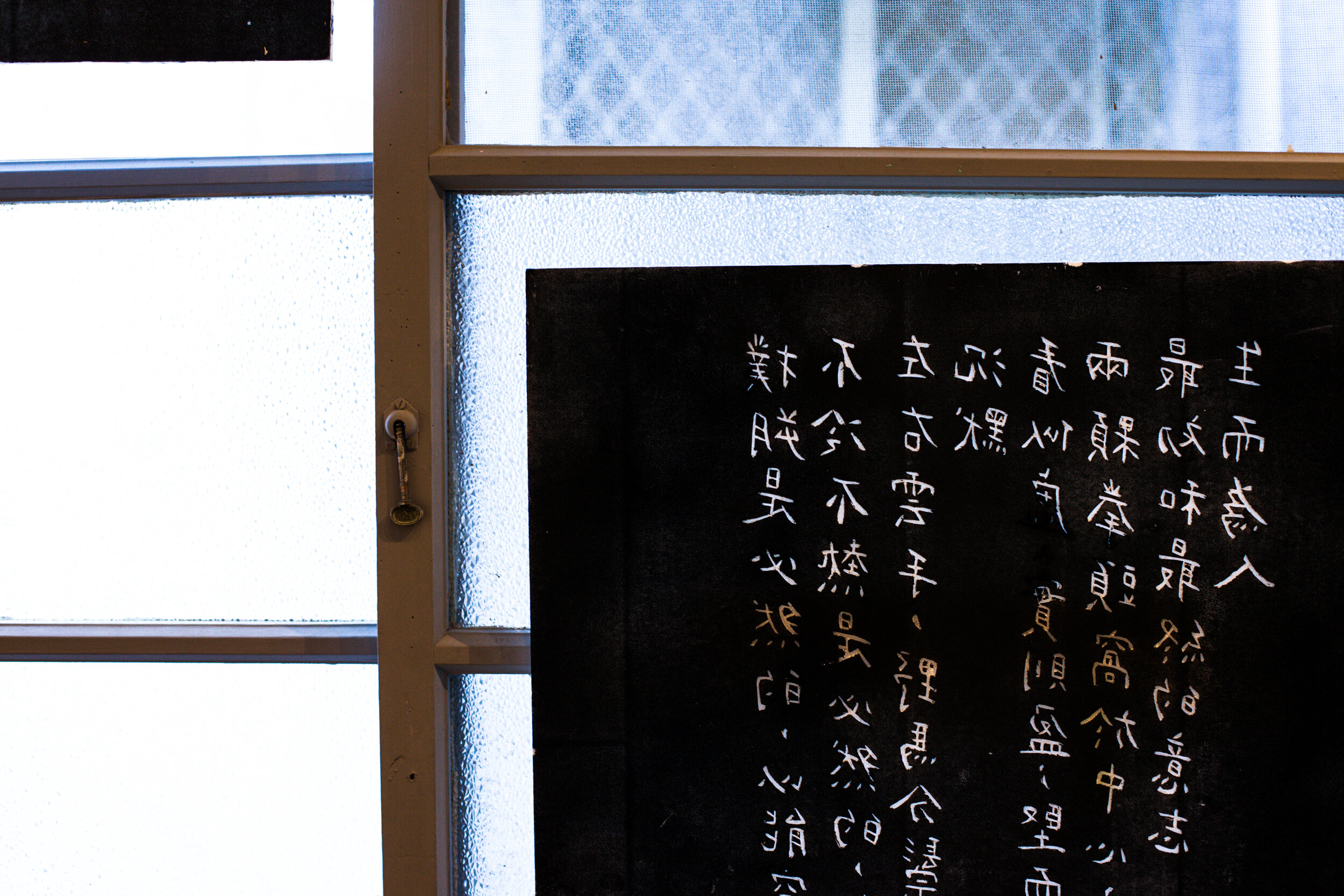
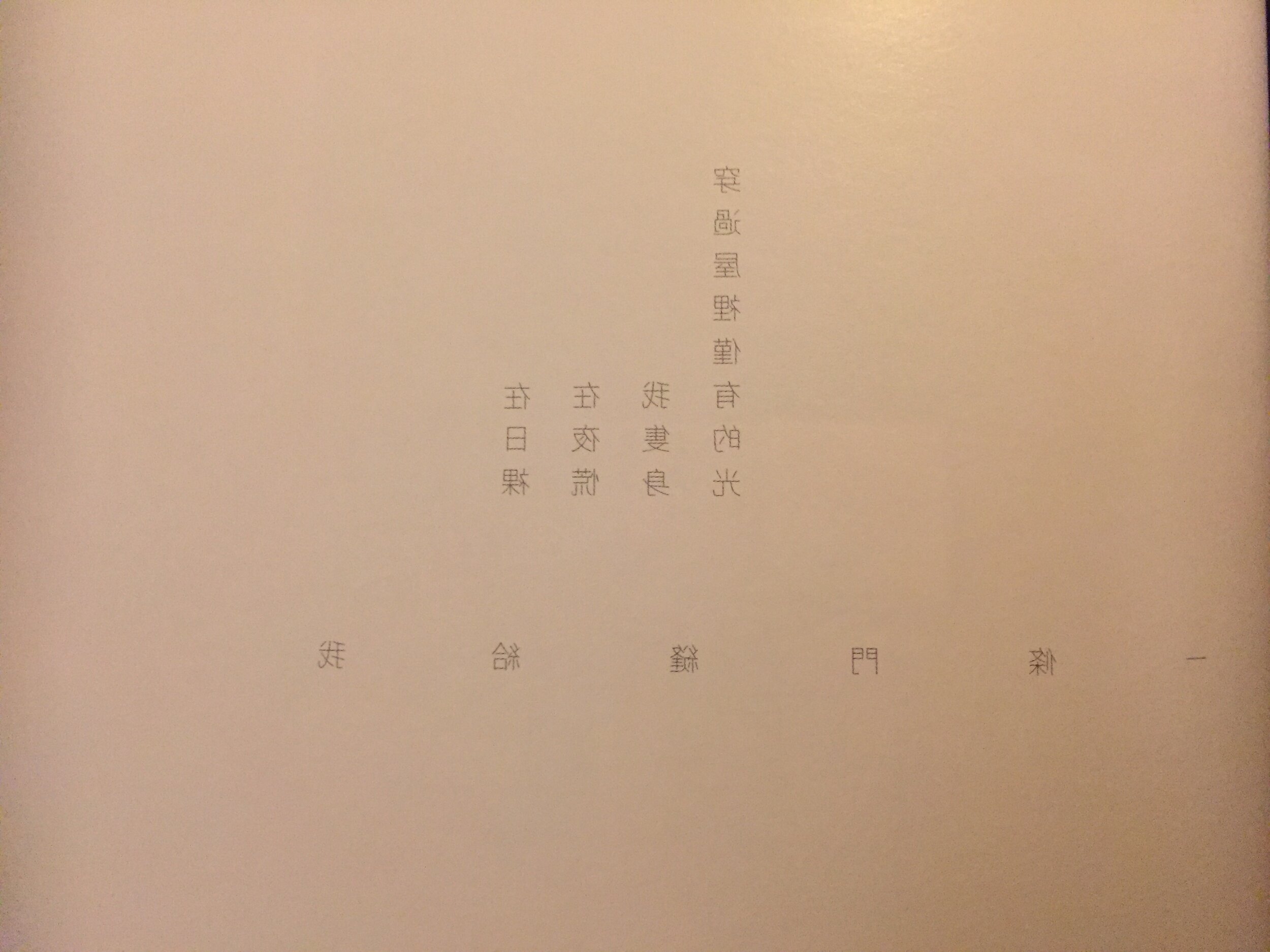
Hsing-Hsin’s Poetry and Photography
Publisher: Liu Hsing-Hsin; 2013
博客來網路書店books.com.tw; 誠品線上elite.com
Hsing-Hsin’s Poetry and Photography consists of two parts. One is a set of photographs based on the concept of genderlessness. It is hoped that when gender is subtracted from the portraits the viewer can focus on the essence of people. The other part is a set of poems. They express the author's many years of confusion about life, love and death, and were written from 2007 to 2013.
日裸:行欣攝影詩集
《日裸》此攝影詩集,影像部份是一系列以無性別概念出發的作品,希望圖中人像在有意無意去除性別化之後,觀看者能更純粹的注視於人的本質上。詩的部分,則是集結了作者多年來對於生命、愛情與死亡的困惑與思索。







































